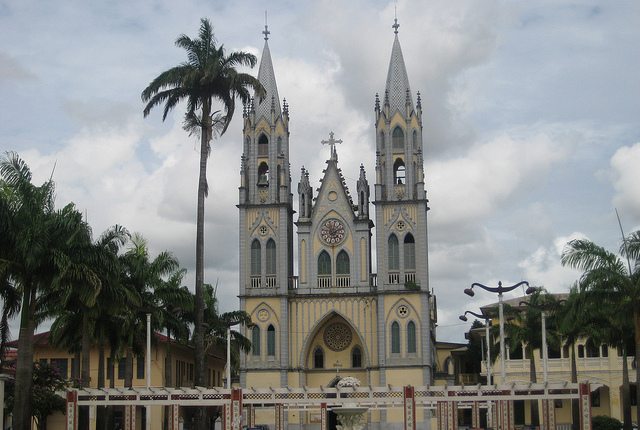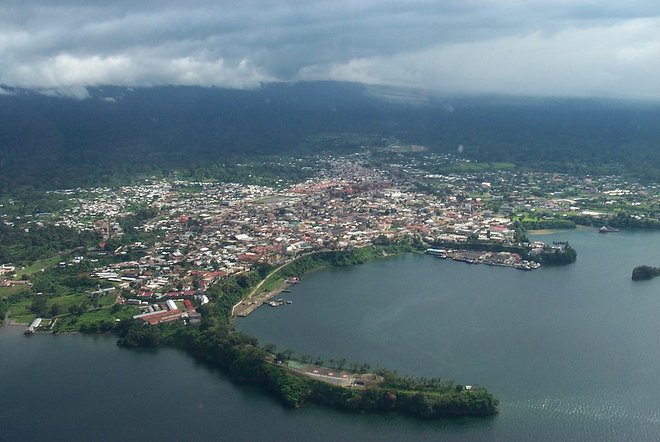
Could you find Equatorial Guinea on a map? No? You’re not alone. The tiny little sliver of a country, nestled between Gabon and Cameroon, is Africa’s least-visited country, according to Gunnar Garfors, a writer who compiled a list based on data from the World Tourism Organization (UNWTO) and the UN.
Decades of dictatorial rule largely cut the country off from the rest of the world, but recent investments in infrastructure and an influx of oil money have created impressive large-scale construction projects that contrast to the many untouched beaches and diverse wildlife.
Equatorial Guinea’s location in Central Africa lends itself to incredible biodiversity, second only to the Amazon. The region is home to the second largest forest in the world, and Equatorial Guinea itself is home to 13 different protected areas, ranging from natural parks and monuments to scientific reserves. In 2012, the government established a campaign to preserve the country’s natural environment, which includes wildlife ranging from gorillas and elephants to mandrills and manatees. Beachgoers will also find stunningly clear waters juxtaposed against black volcanic beaches -- and four species of sea turtle make their home in the country’s waters.
For an intrepid traveler, Equatorial Guinea -- the only Spanish-speaking country on the continent -- has loads to offer. Here’s what you need to know about the newest country on your travel bucket list.
How to Get There
Equatorial Guinea’s Malabo International Airport is serviced by three popular international carriers — Air France, Iberia, and Lufthansa, all of which connect to Malabo from European cities. It’s about a seven-hour flight from Paris.
The airport itself is located on Bioko, an island of the coast of neighboring Cameroon, and is just a few miles outside of the Malabo proper. To get to the country’s mainland, you can take a ferry or a domestic flight to Bata on Ceiba Intercontinental, the country’s national airline.
What to Do
- Visit Bioko Sur, the southern part of the island that’s home to protected jungle. In Moka, you can visit the Moka Wildlife Center, part of a partnership between the Bioko Biodiversity Protection Program and Drexel University. Nearby Ureka, also in Bioko, is one of the wettest places in the world and home to turtle nesting sites.
- Take a walking tour of Malabo. The country’s capital is small, but home to plenty of fascinating colonial architecture, markets, and diverse foods.
- Explore two of the thriving cities — Mongomo, the president’s hometown, and Oyala, the proposed new capital. Mongomo, on the border of Gabon, has a series of elaborate architectural monuments, including a massive basilica reminiscent of St. Peter’s. It ranks as the second-largest cathedral on the continent. Meanwhile, Oyala, the country’s proposed new capital, gets called a “mini Dubai” with its own set of massive skyscrapers rising out of the jungle.
Where to Stay
The port of Malabo. Ipisking/Wikipedia/CC BY-SA 3.0
The country isn’t a hotbed of luxury hotels, but there are some nice options.
The Sofitel Malabo Sipopo Le Golf is situated on a private beach with views of Mount Cameroon and an 18-hole golf course. (Malabo is home to another Sofitel property, as well as a Hilton.)
Another newer option is the Grand Hotel Djibloho, one of the first buildings to be completed in the planned capital city. The location is a bit remote, but the property has both a golf course and a lovely pool — and easy access to Piedra Nzas Natural Monument and the Parque Nacional de Los Altos de Nsork, established in 2000.
What Else to Know
If you’re an American, getting into Equatorial Guinea is easy — U.S. passport holders don’t need a visa if they’re staying for less than 90 days. You do, however, need proof of vaccination for yellow fever, polio, cholera, and smallpox, which may be tricky given that the latter two vaccinations aren’t commonly given in the U.S.
Credit cards aren’t widely accepted, and ATMs outside of major city centers are few and far betweens, so be sure to have an ample supply of Central African Francs (CFA).
Up until recently, a special permit from the country’s Ministry of Information and Tourism was required for taking photos in the country. The law has changed, but you may still run into police or other officials attempting to impose a fine for taking photos. Law still forbids taking photos of the Presidential Palace and many other government or high-security buildings. Exercise caution and common sense when using your camera.
You’ll Also Like:
- 6 Reasons to Visit the Least-Visited Country in Europe
- How Safe Are the Most Popular Tourist Destinations in Africa?
- 10 Amazing Hotels in Africa to Add to Your Bucket List
All products are independently selected by our writers and editors. If you buy something through our links, Oyster may earn an affiliate commission.



